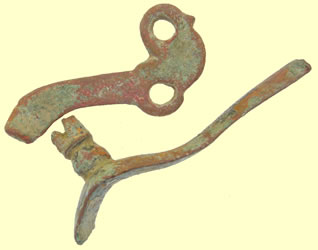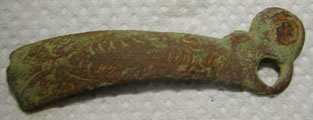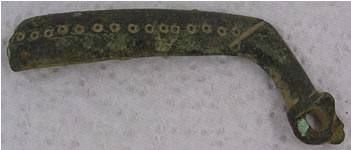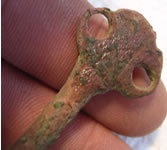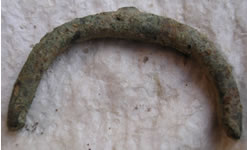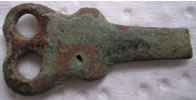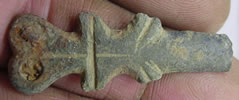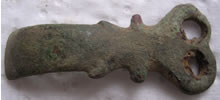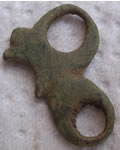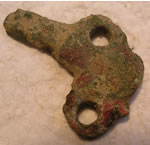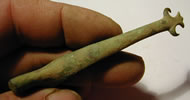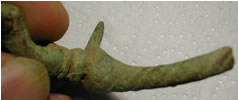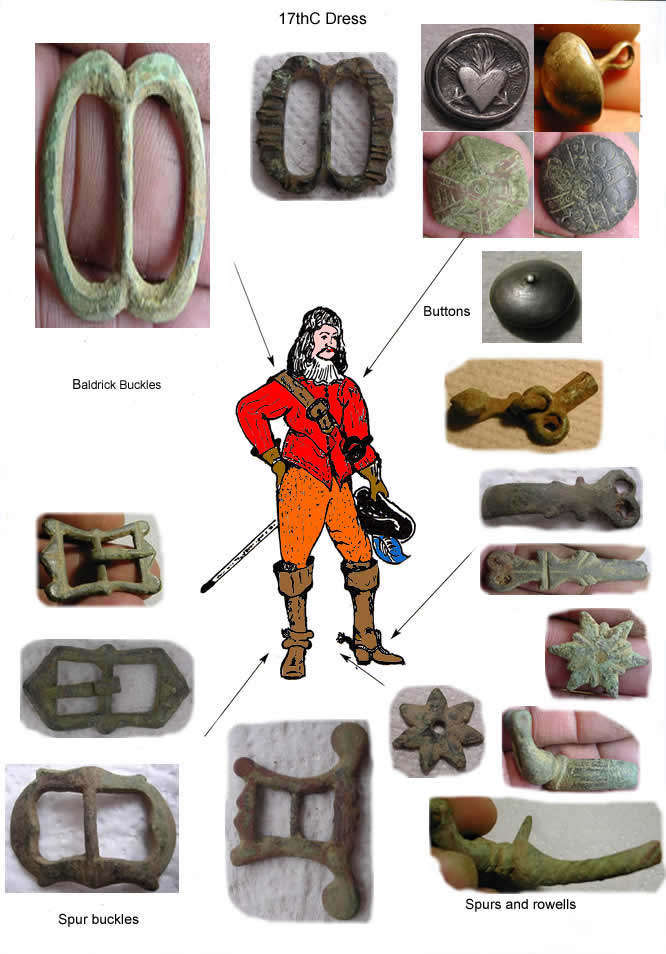
Rowels probably originated in France or Spain in the 10th Century A.D., they are first recorded in Britain in Henry III's reign - two seals from 1240 depict the king - on one he wears prick spurs, and on the other rowelled.
In the following centuries spurs became associated with rank and chivalry. We speak of "earning one's spurs" - a disgraced knight would have his spurs and sword broken as part of his punishment. A knight would wear gold or gilt spurs and an esquire silver .
Through the fifteenth Century rowels became smaller and spur necks became longer. This was so that the spur could reach around the flanchards ( horse armour or barding ) The mediaeval horseman who rode with legs extended forwards also needed spurs with longer necks which could still reach their horse's sides. Over the following centuries, rowels changed shape and size, some developed "jingle-bobs". In seventeenth Century Germany spurs developed multiple necks and rowels, but these were probably for ceremonial or dress use only.
Detached rowels vary a great deal in shape and size, and many types are long-lived, so without the rest of the spur they are difficult to date. Rowel spurs begin in the early 13th century and are ubiquitous from the early 14th century to at least the 17th century. There is a suspicion that larger rowels are more likely to be medieval, and small ‘star’ rowels more likely to be post-medieval. Lozenge-shaped points were popular during the late 14th and 15th centuries
Rowels
A rowel is a rotating wheel or disc with teeth, in place of the goad; a rowel with many small points is milder than one with a few larger points. Rowels are held in place with bars, usually of iron, which pass through the two pierced projections of a rowel box.
Detached rowels vary a great deal in shape and size, and many types are long-lived, so without the rest of the spur they are difficult to date. Rowel spurs begin in the early 13th century and are ubiquitous from the early 14th century to at least the 17th century. There is a suspicion that larger rowels are more likely to be medieval, and small ‘star’ rowels more likely to be post-medieval. Lozenge-shaped points were popular during the late 14th and 15th centuries (Ellis in Mayes and Butler 1983, 258).
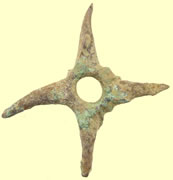 |
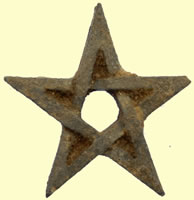  |
| Cast copper alloy Medieval spur rowel probably dating from about 1350 - 1400. |
Unknown |
Medieval to post-medieval gilded copper alloy spur rowel with part of the iron pin in the central hole, and five oval-sectioned points alternating with short round-ended radial projections. On both faces the points are decorated with a line of punched crescentic impressions |
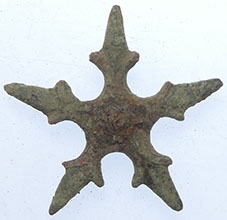 |
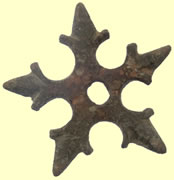 |
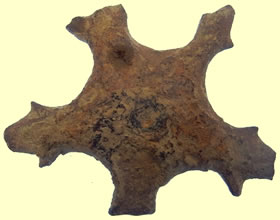  |
| |
|
|
|
Late 14th-15th century - Large copper alloy medieval spur rowel |
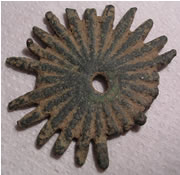 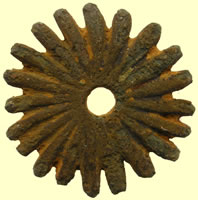  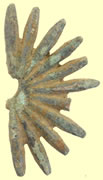 
 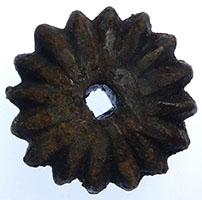  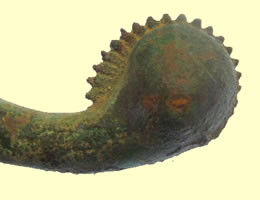
|
A copper alloy medieval to post medieval rowel spur, dating to the c.14th- 17th century. The rowel is a six to ten pointed star shape |
 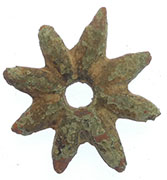   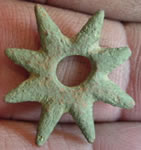
    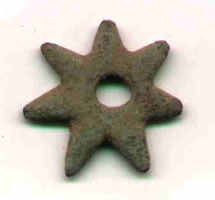
  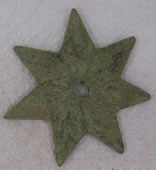  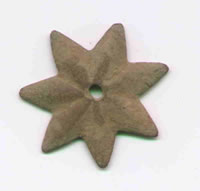
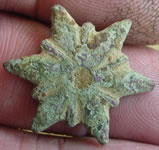 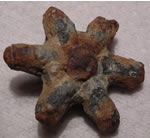 
  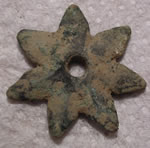 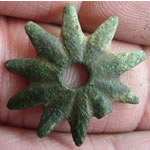  
   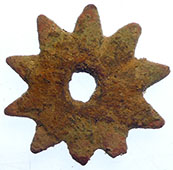  
  
|
A copper alloy medieval to post medieval rowel spur, dating to the c.14th- 17th century. The rowel is a five pointed star shape, with each point oval in cross section. In between each point is a triangular groove. In the centre of the rowel is a circular hole for attachment. |
    
  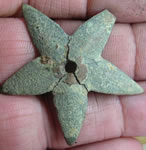  
 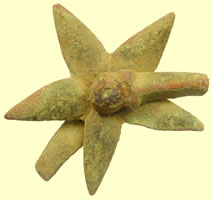 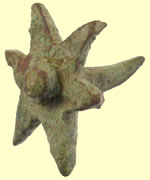 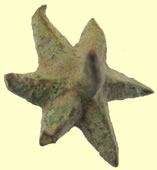
|
Roman prick spur |
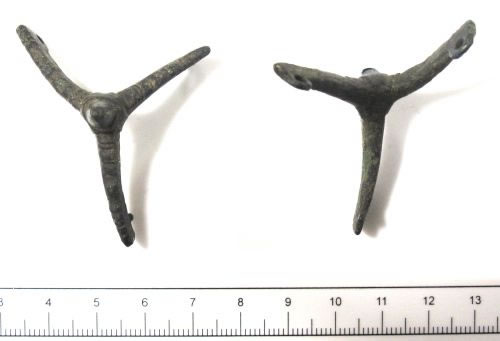
The earliest spurs found in Britain are prick spurs, and date to around the time of the Roman conquest.
 
  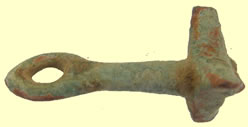 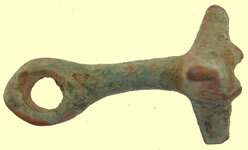
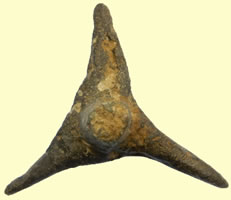   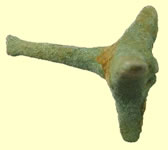 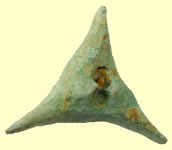
   
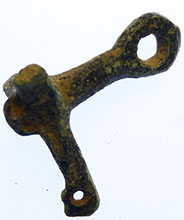  
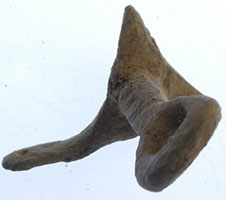 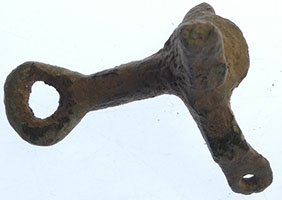
 
|
Medieval prickSpur |

 
Pyramidal goads appear on spurs in the mid 11th century (Ellis in Clark (ed) 1995, 127) and continue, with conical and ribbed variants, until prick spurs decline in popularity in England at the end of the 13th century (Ellis 2002, 4). Pyramidal goads appear to get larger over time and can develop into double-pyramids or octahedrons.
Complete spurs with pyramidal goads can be made all of iron (WILT-587DE2) or all of copper alloy (KENT-C9D76A, LEIC-595916), but detached goads are much more common, often with a copper-alloy sleeve and an iron core. |
Rowel spurs |
Rowel spurs were introduced in the early 13th century (Ellis in Saunders and Saunders (eds) 1991, 58; Ellis in Clark (ed) 1995, 128). Rowel spurs and prick spurs co-existed for a century or so, but from the early 14th century rowel spurs were the only form used.
A rowel is a rotating wheel or disc with teeth, in place of the goad; a rowel with many small teeth is milder than one with a few larger teeth. Rowels are held in place with bars, usually of iron, which pass through the two pierced projections of a rowel box.
Spur sides had already begun to curve under the ankle by the time that rowels were introduced. By the middle of the 13th century, most spur sides were deeply curved, and this situation lasted for about a century. |
| |
15th to 16th C Spurs
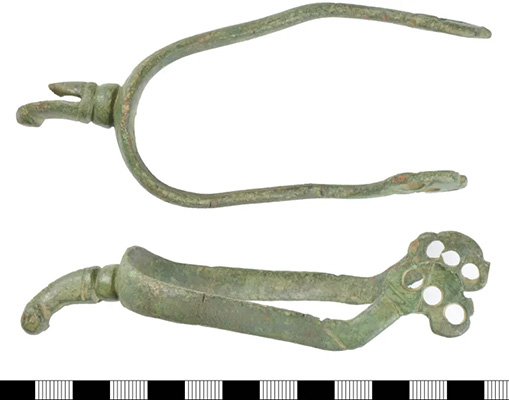
15th C spur
 
Amazing find complete 1350-1400 AD Medieval spur with rowel still attached |
  
  
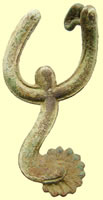 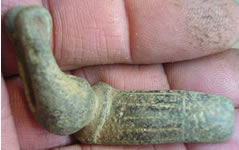  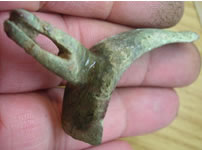
|
17th/18th C Spurs |
   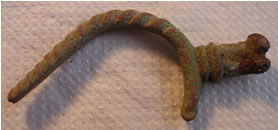
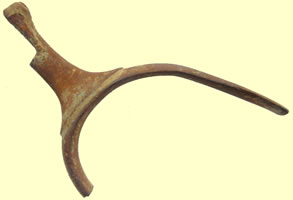 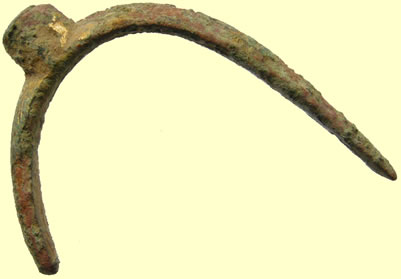 
   
  
  
   
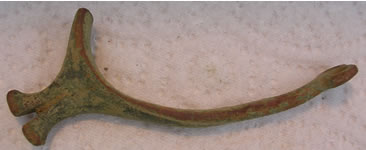 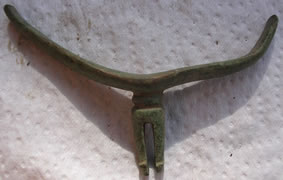
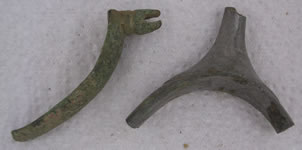 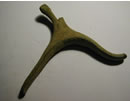 
  
  
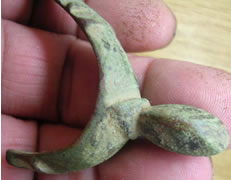  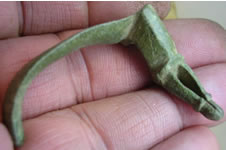
  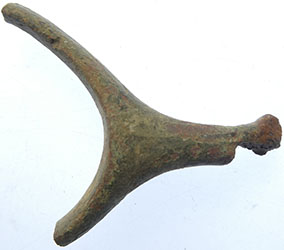
|
17th/18th spur fittings
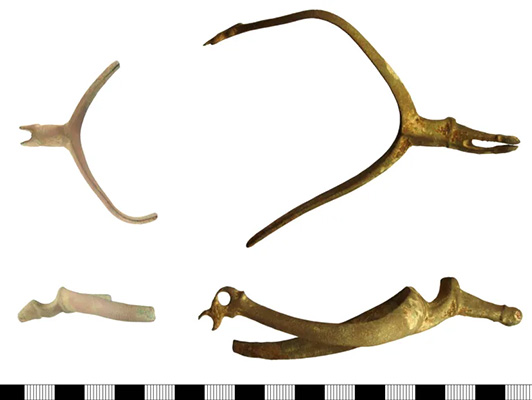
|
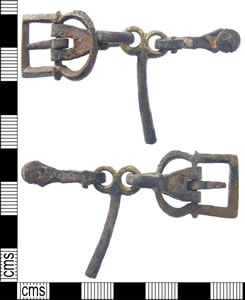
17th Century spur with buckle.
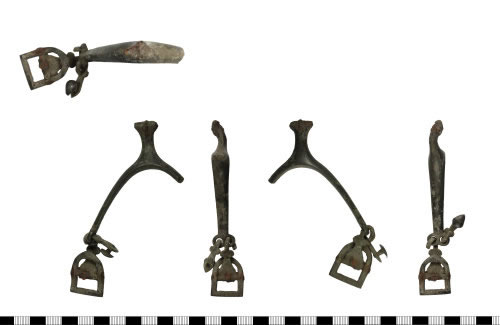
AD 1500- 1700

17thC spur
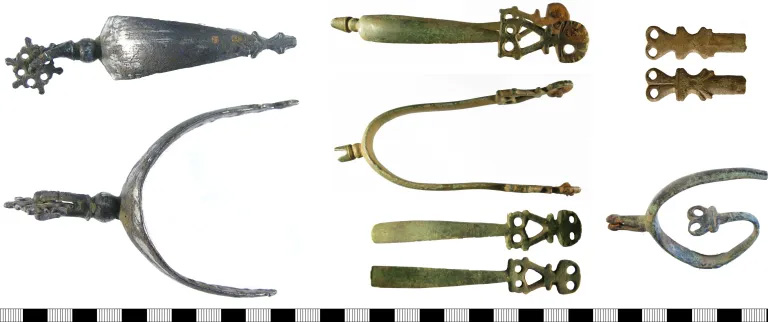
17thC spurs
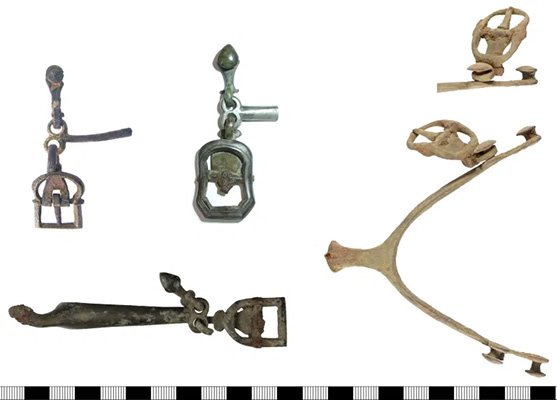
17thC spurs
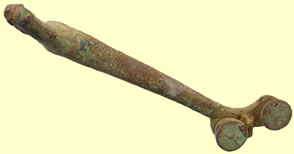 
 
  
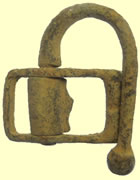    
 
 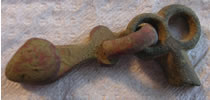 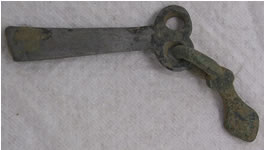
  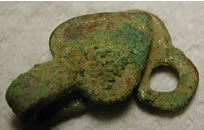
 
   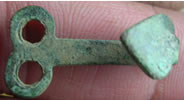

  
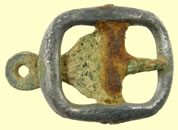  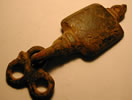 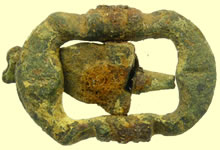
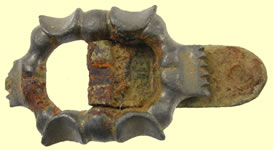 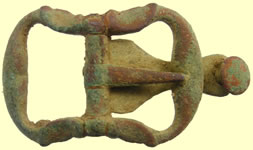 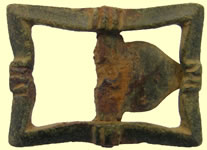 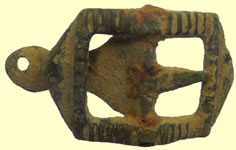
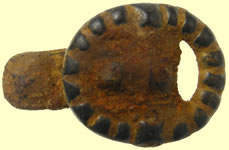 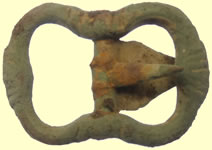  
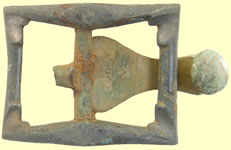 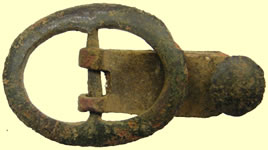  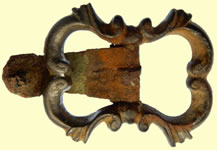
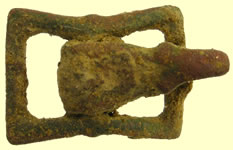 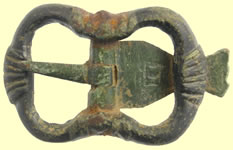  
|
| |
Figure-of-eight terminals dominate from the 14th to the 18th century.







